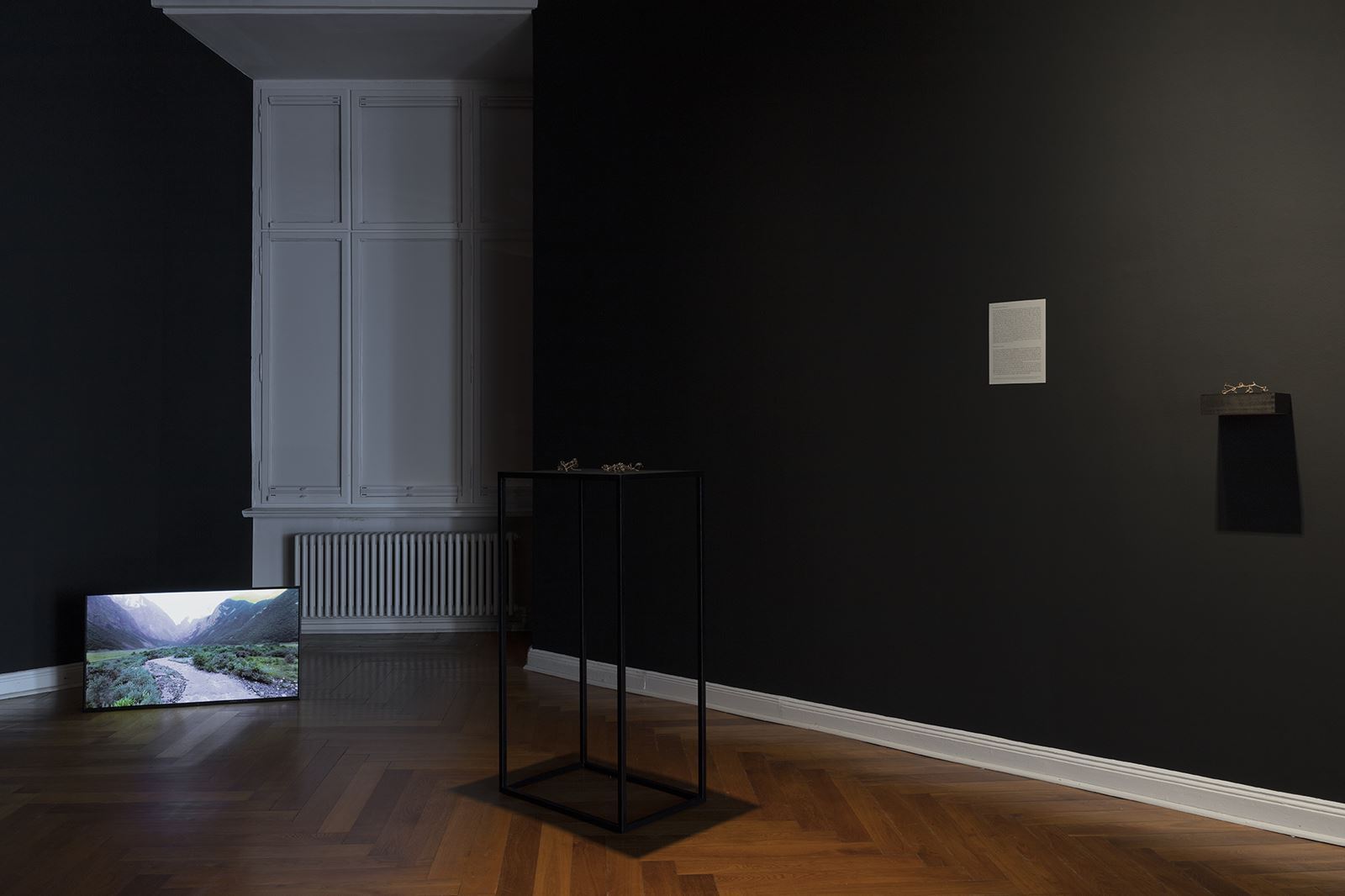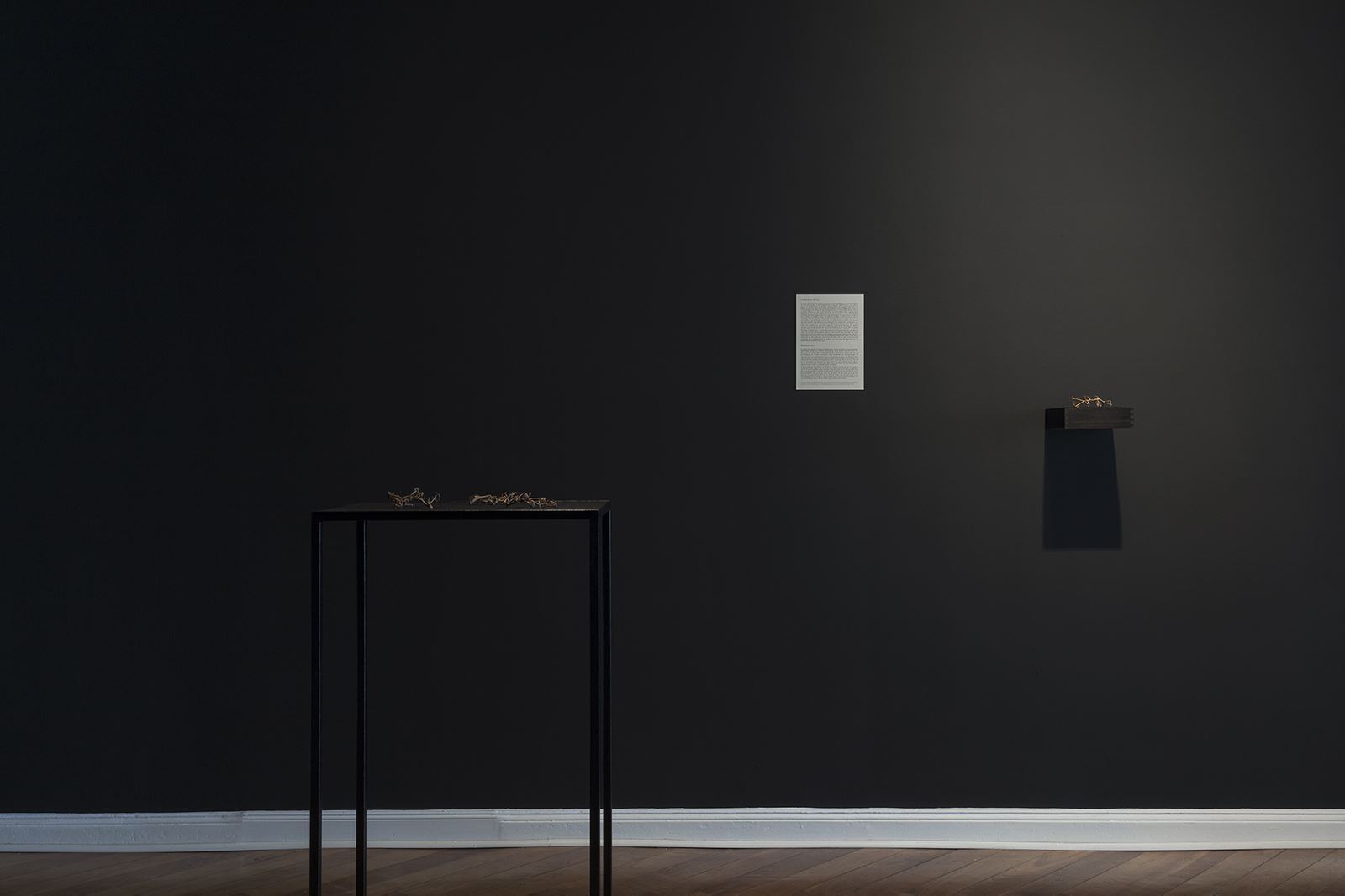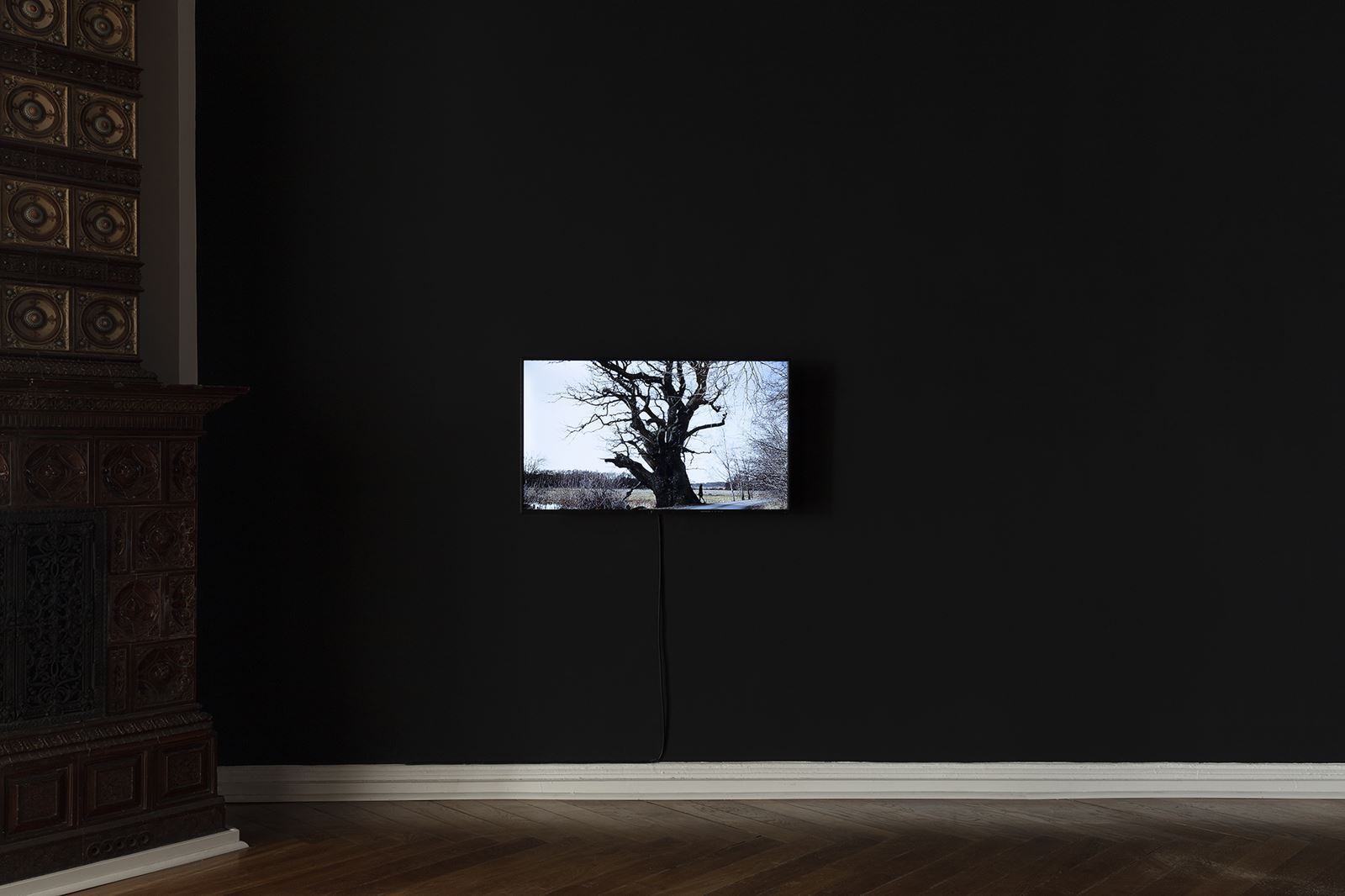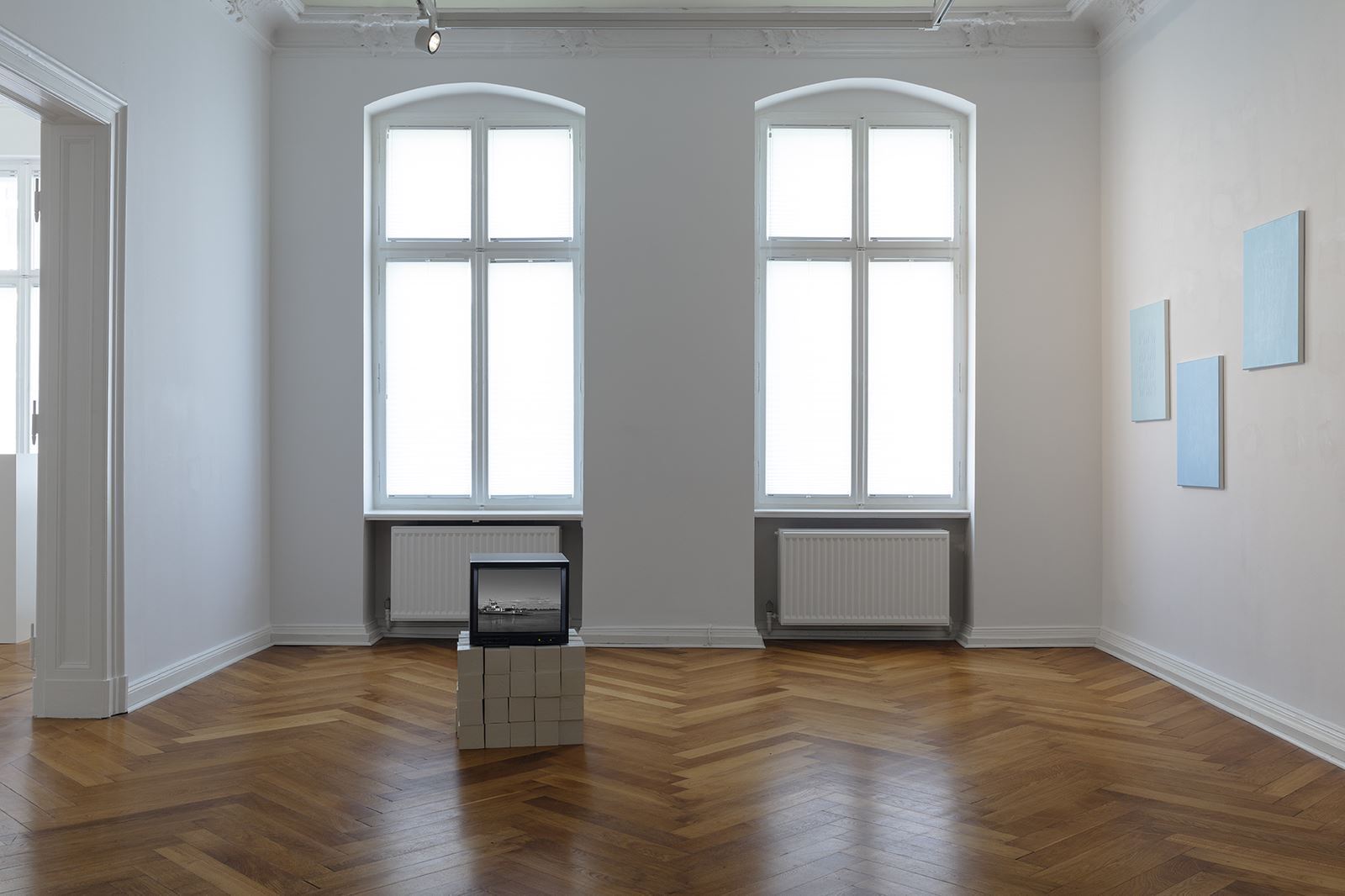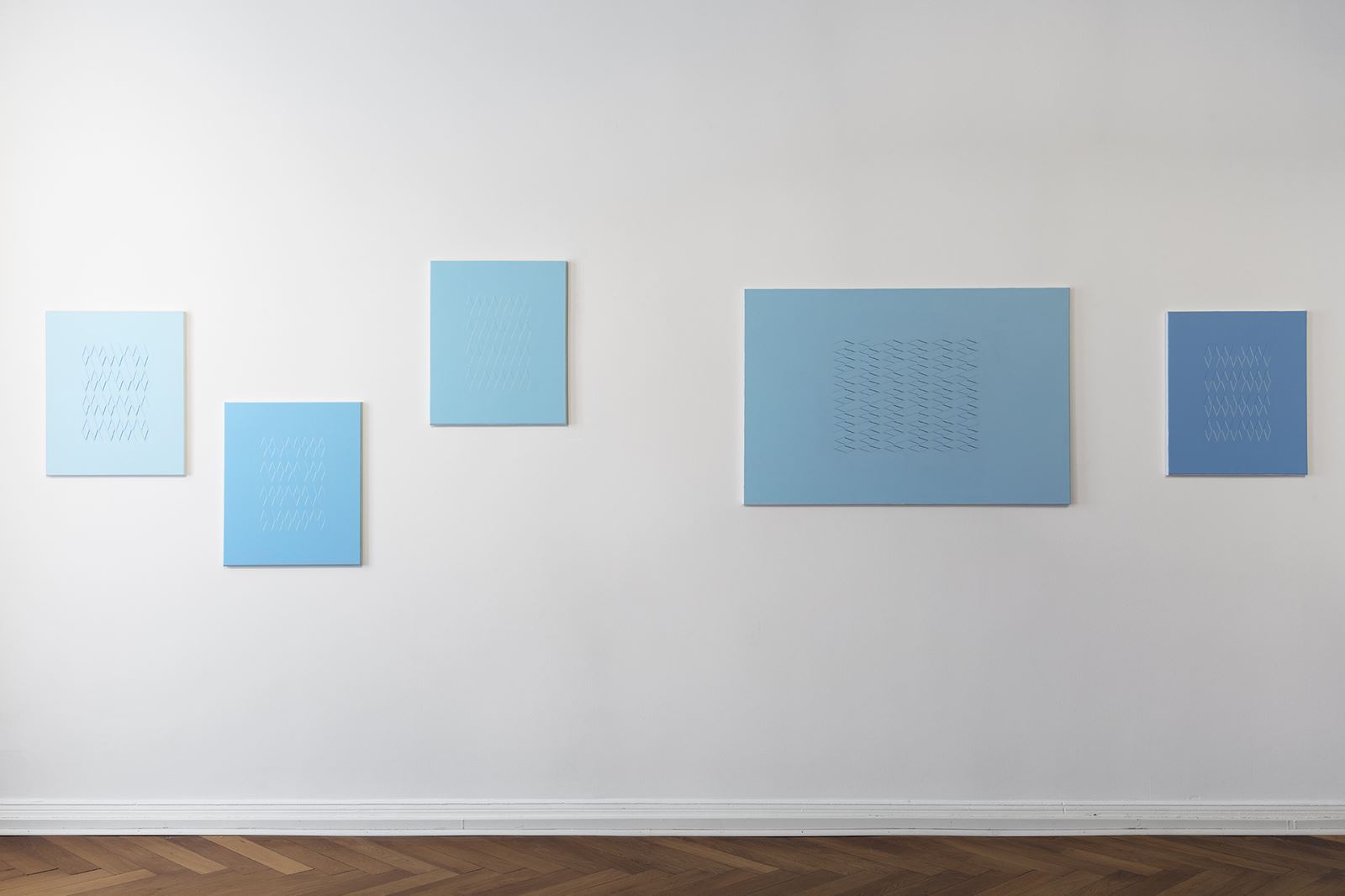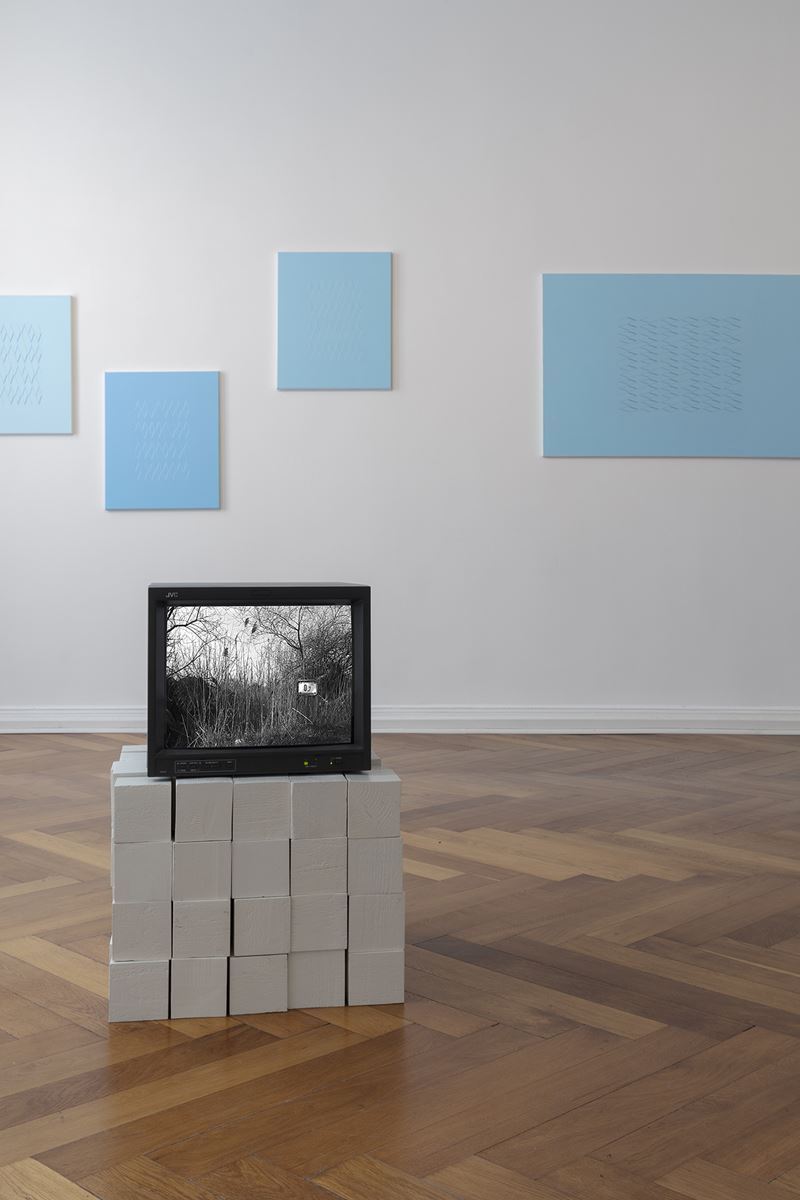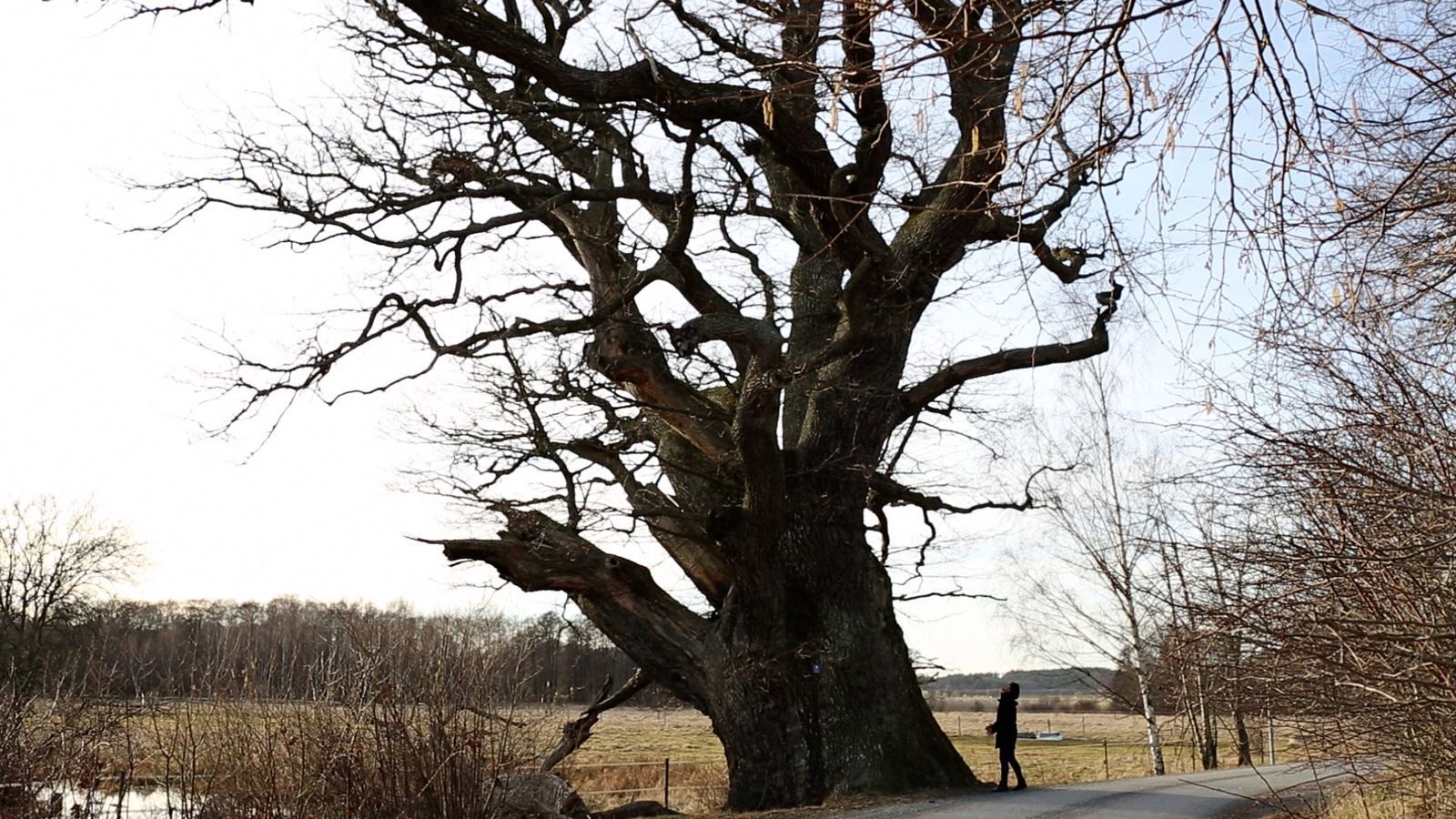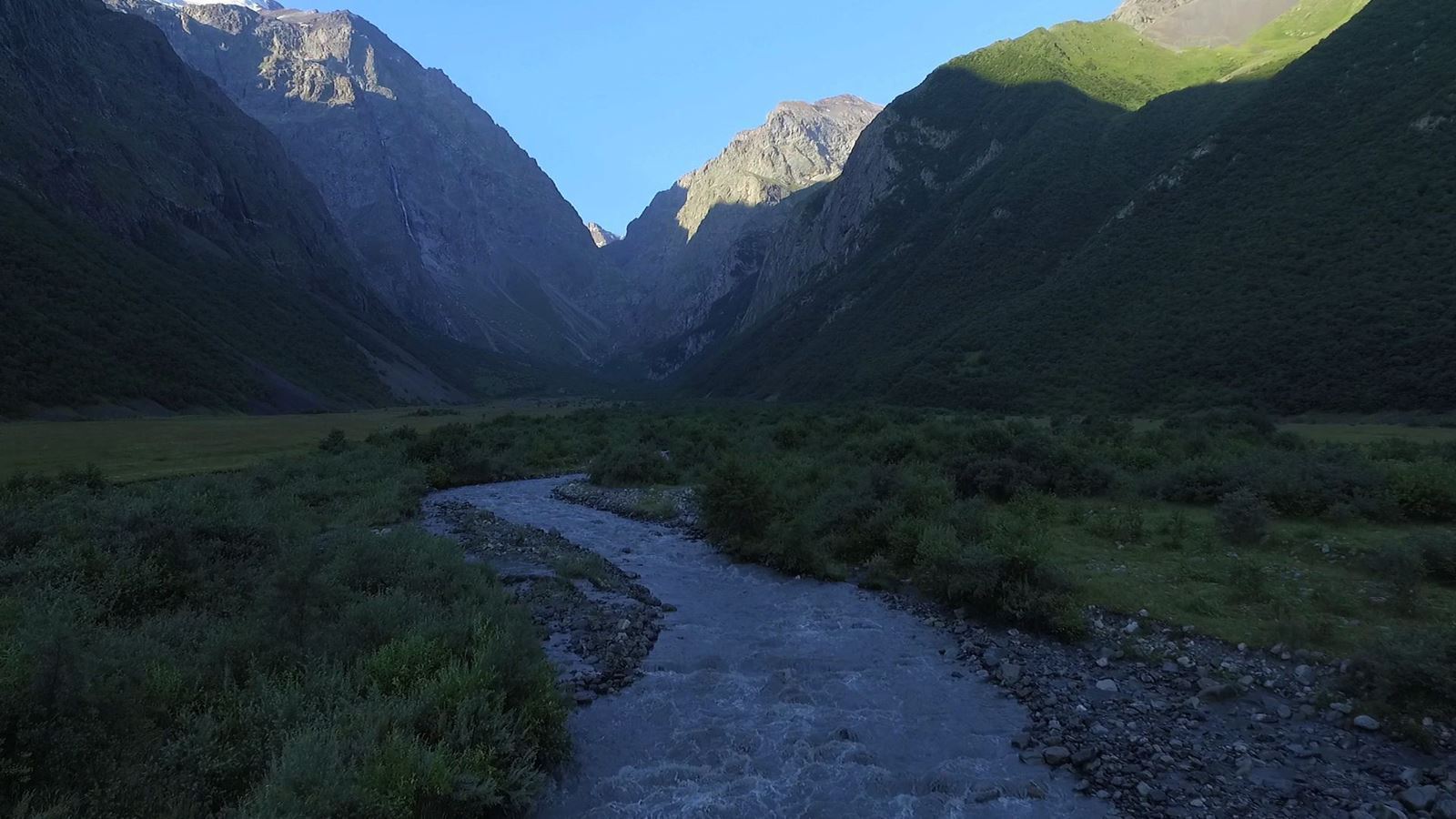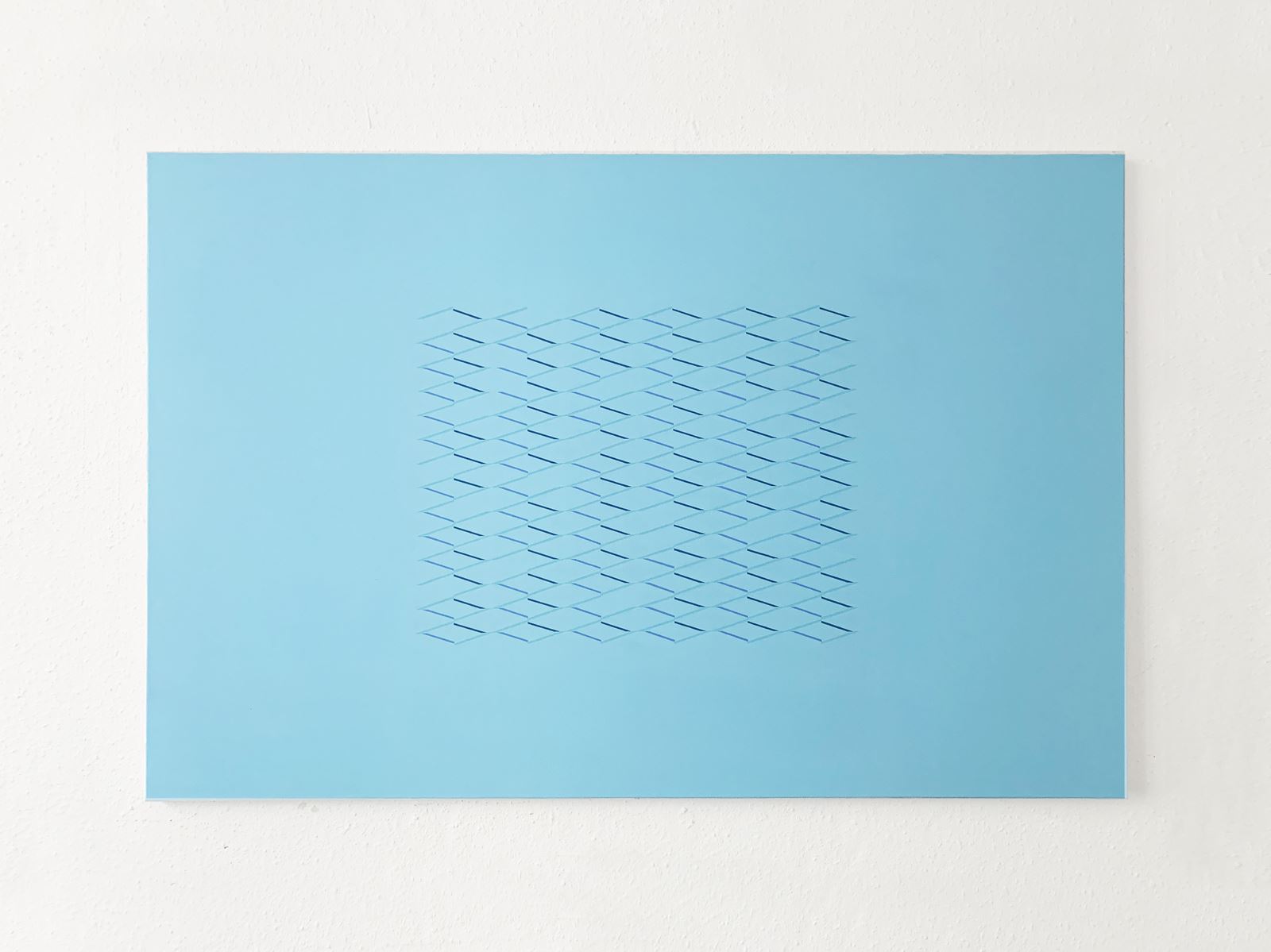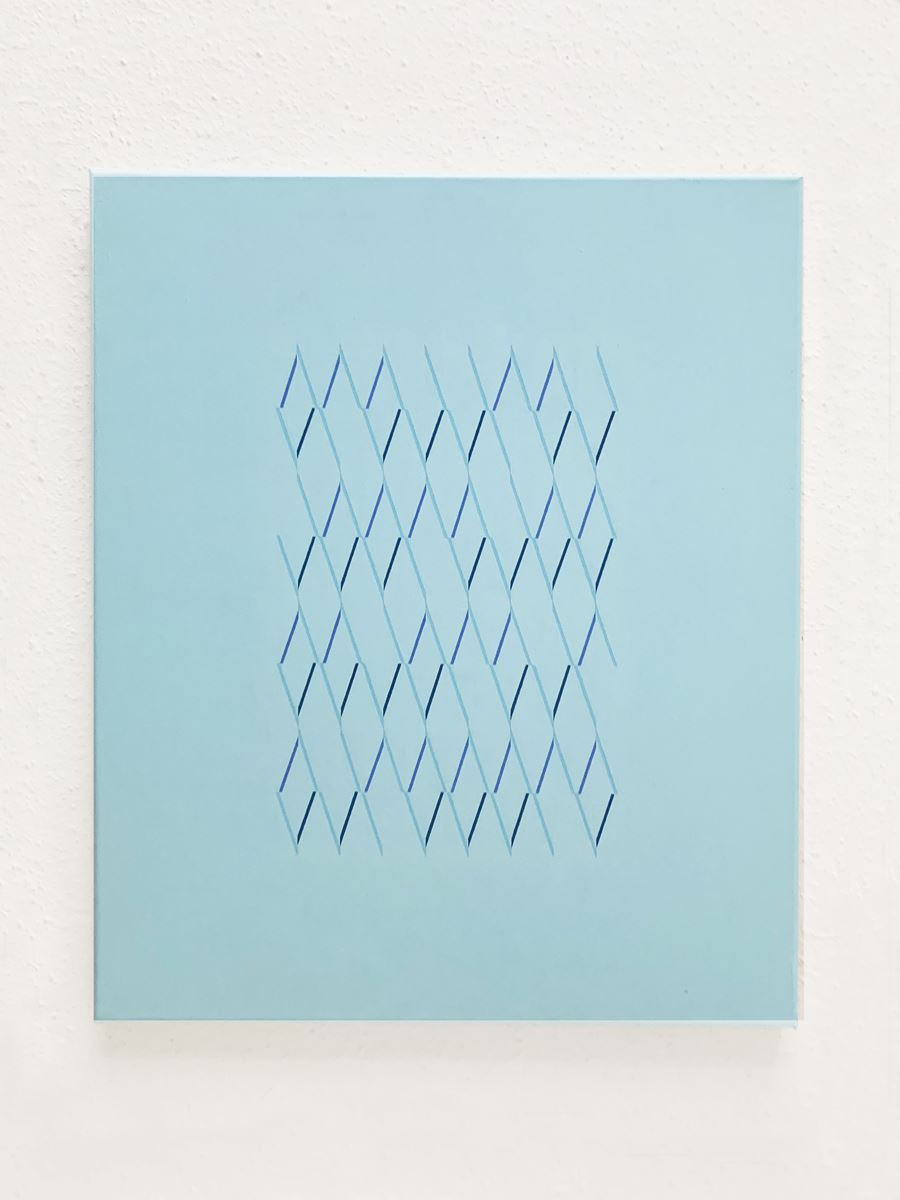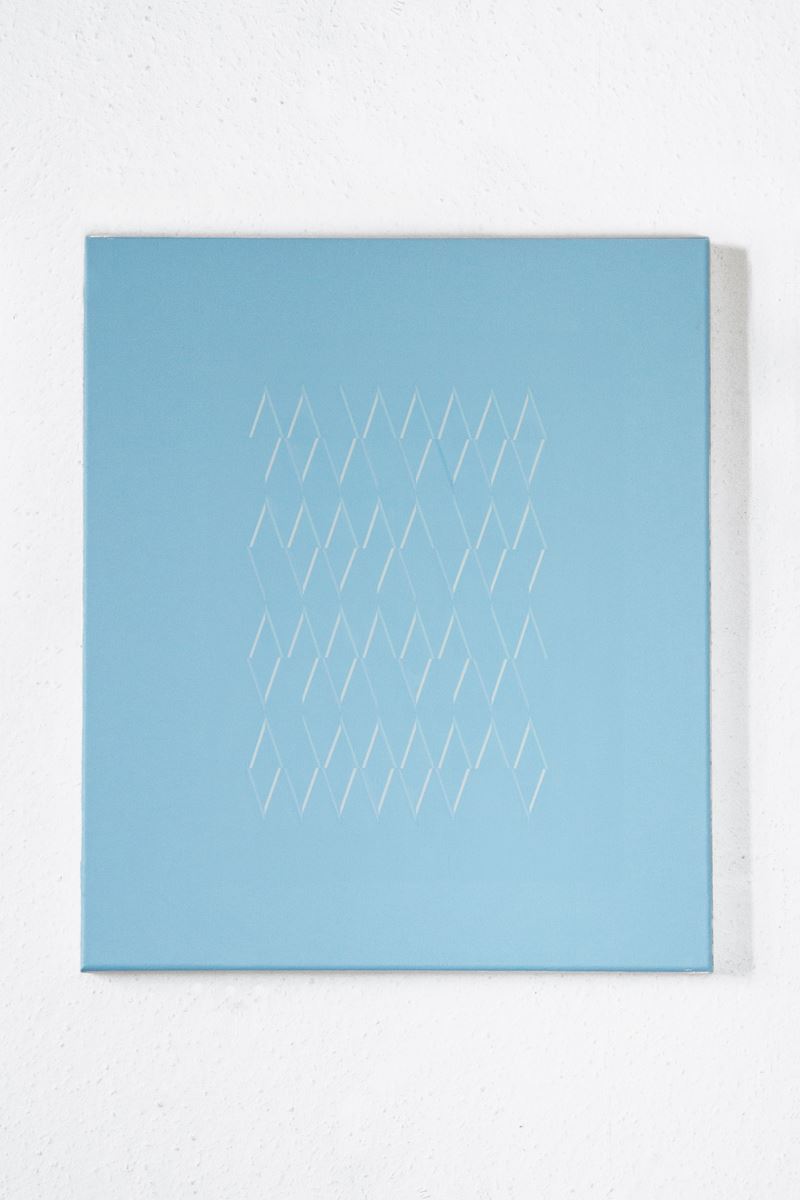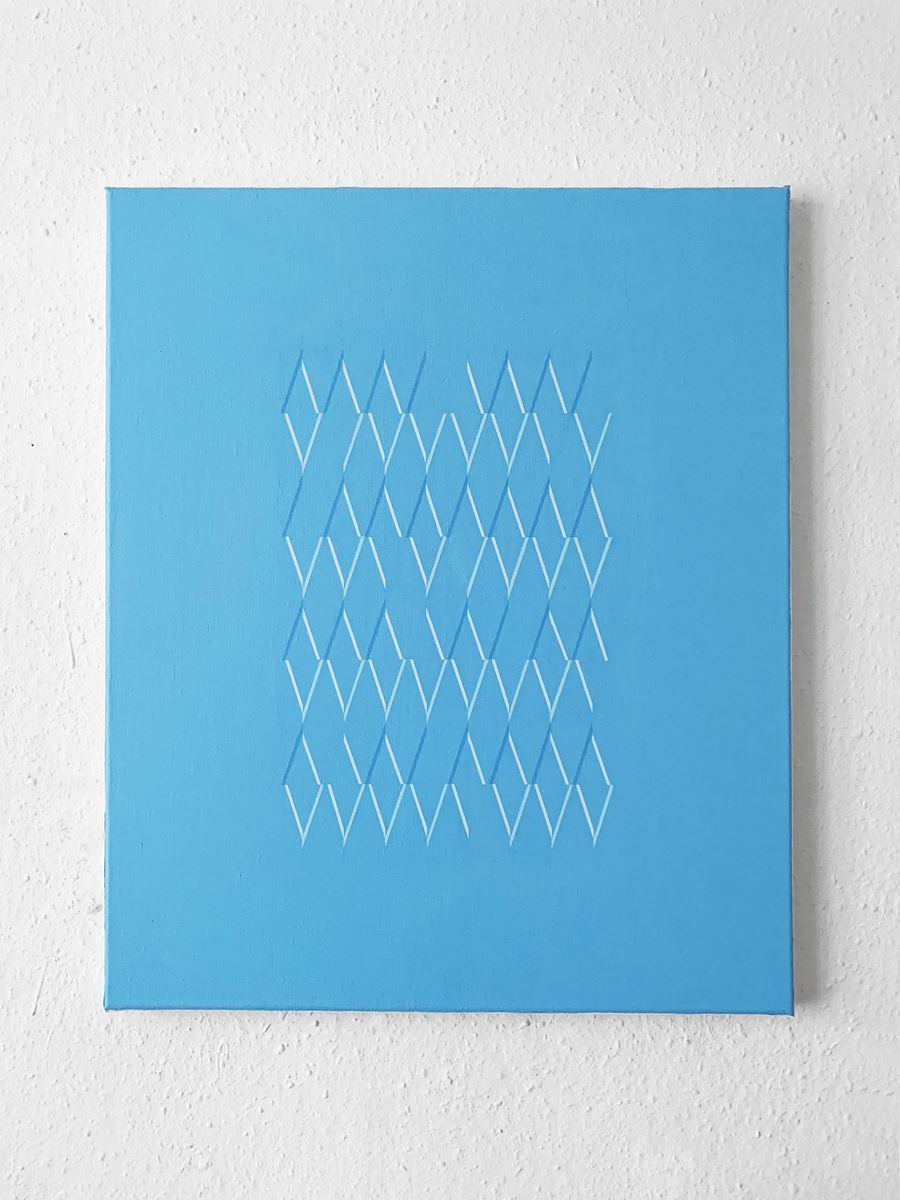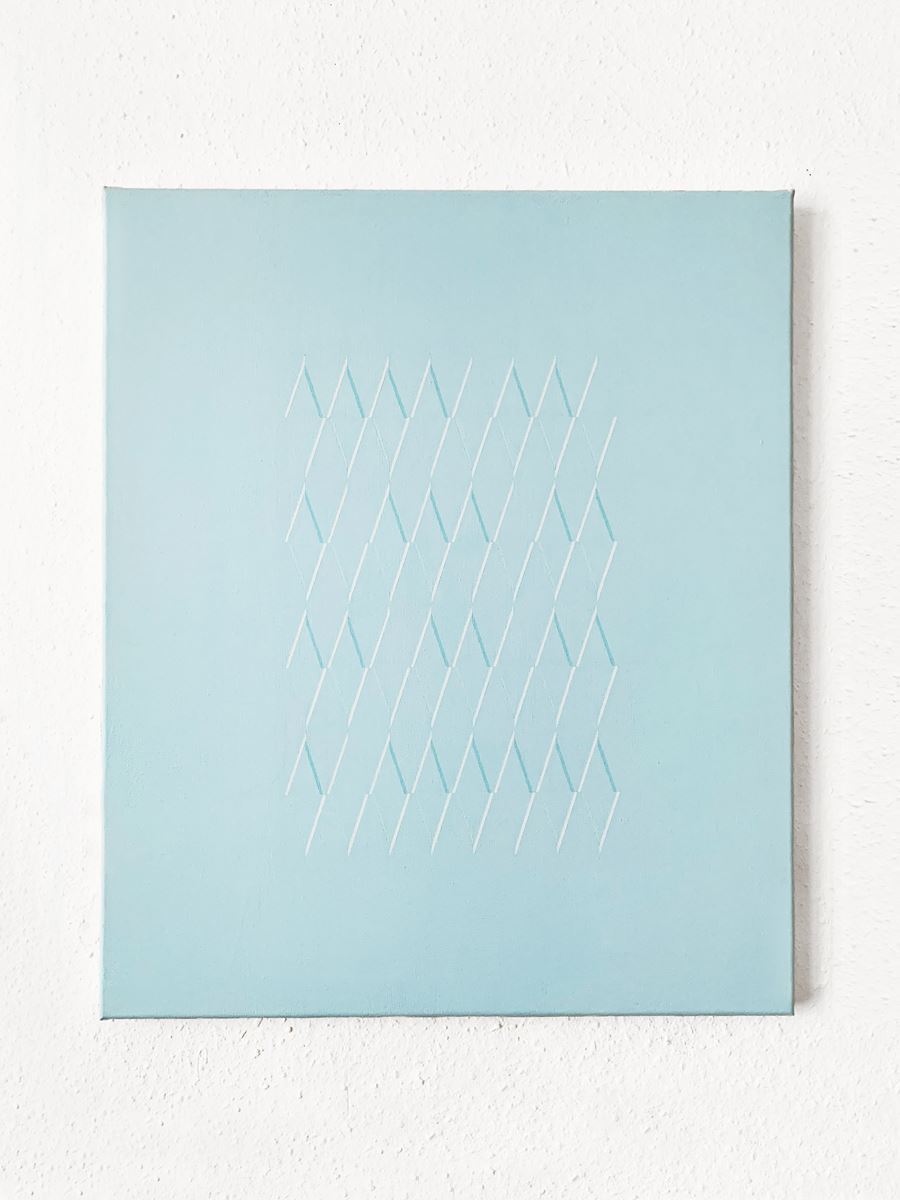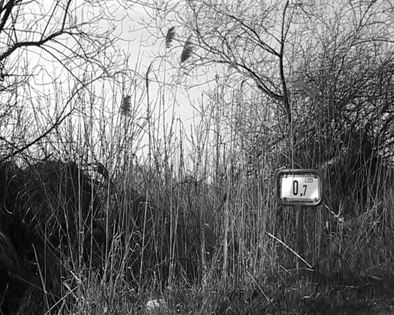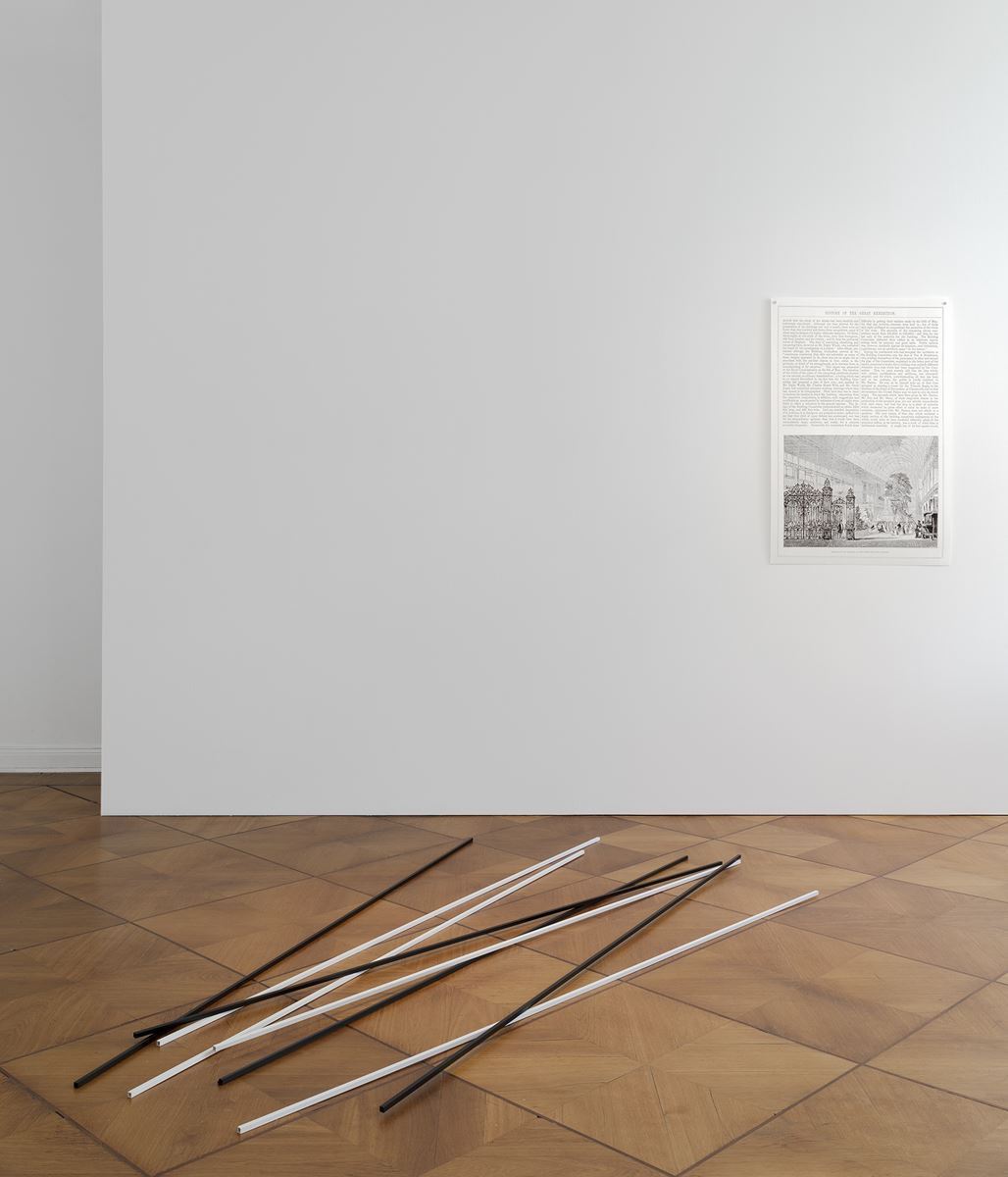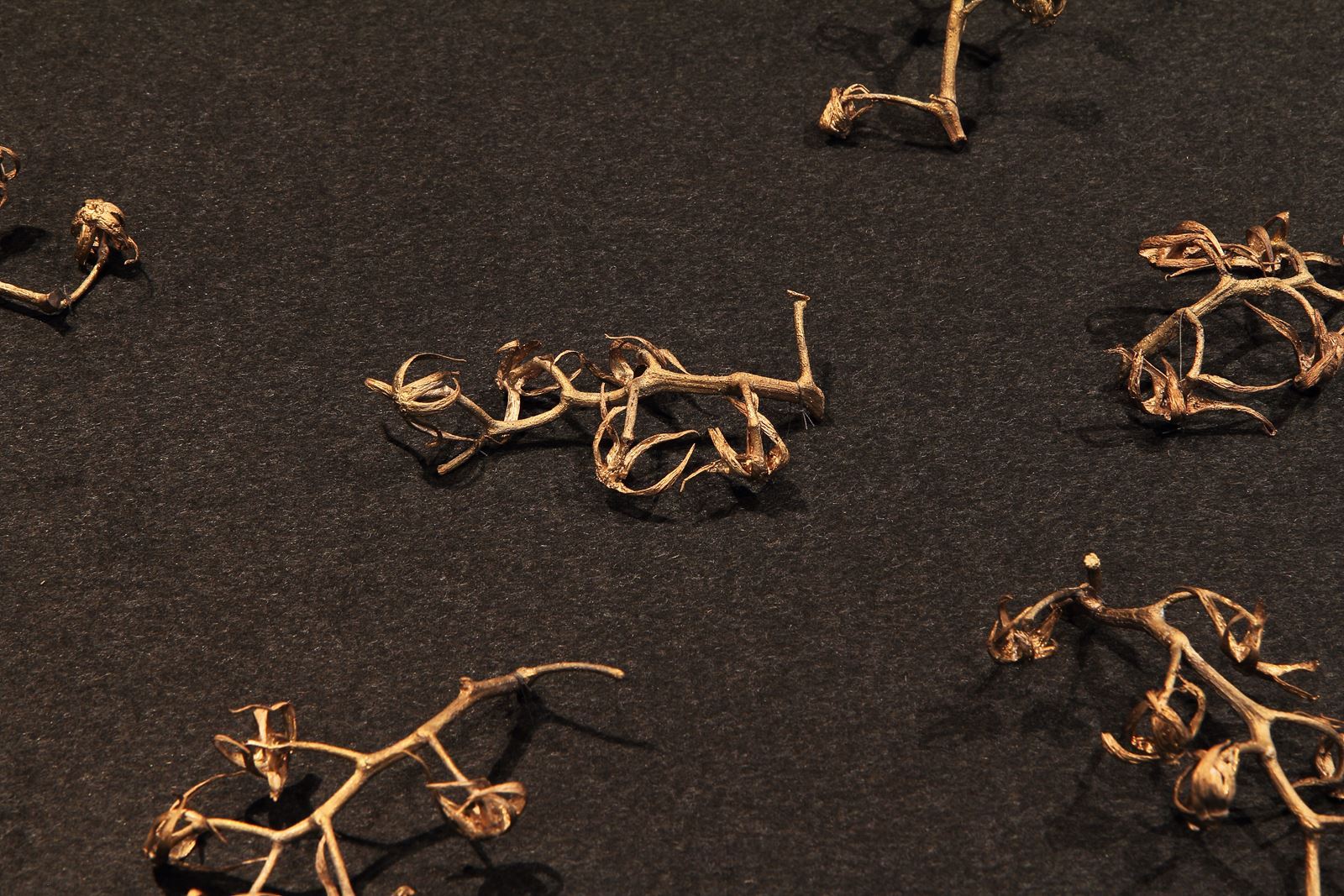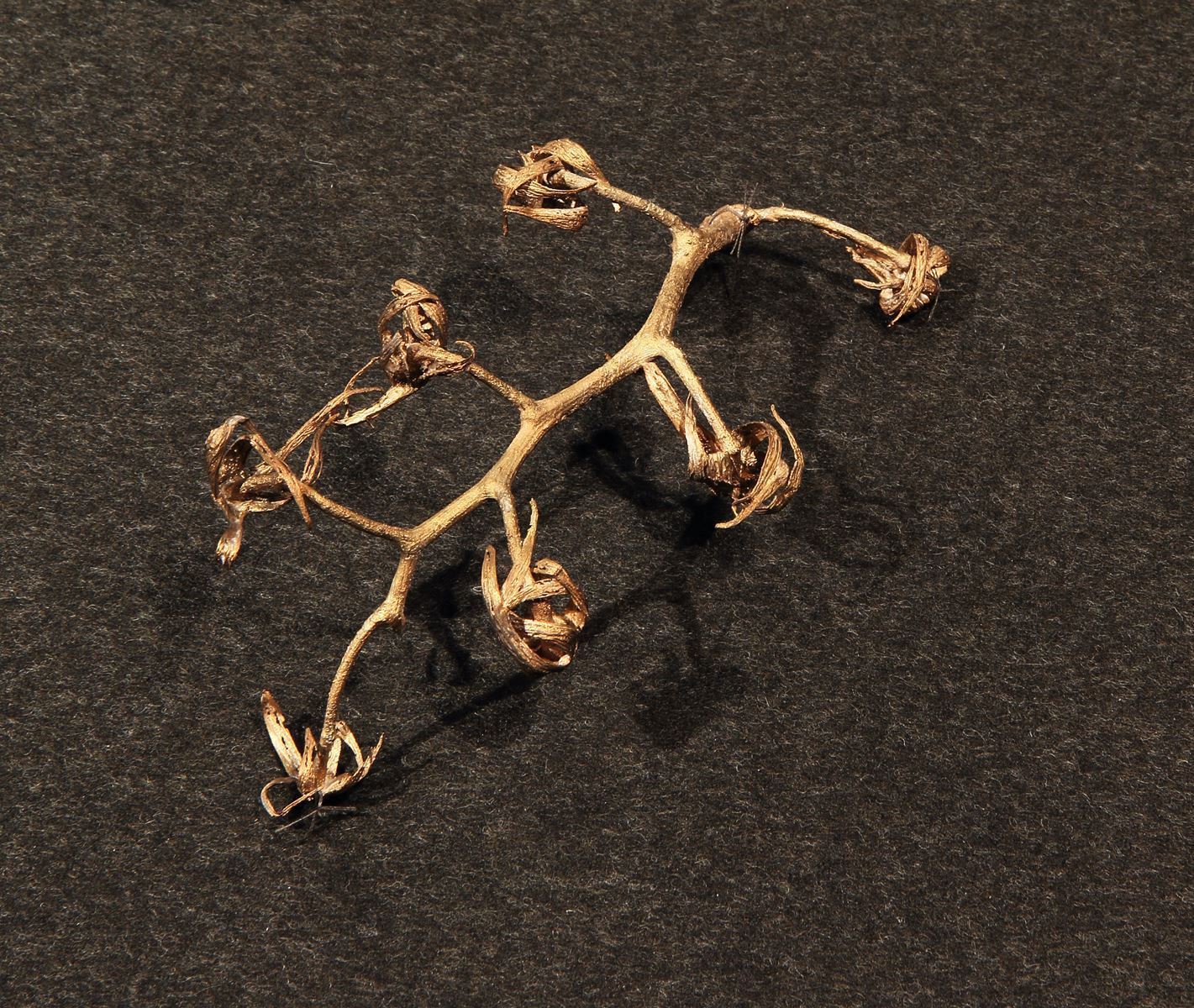BASIN BÜLTENİ - Recurrence
26/06/2020 - 29/08/2020
Zilberman–Berlin is pleased to announce the group exhibition Recurrence featuring works by Isaac Chong Wai, Elmas Deniz and Simon Wachsmuth, curated by Lotte Laub. All the exhibits make references to the 19th century, a period when science, economy and technology developed dramatically but at the same time Romanticism constituted an alternative world to industrialisation and technological advances. Love and longing, and devotion to nature are the romanticist’s emotional fuel and create an environment of comfort for the individual in a rapidly changing world. Today, in another era of intrusive change, humans’ relationship to nature is again being looked at closely, but because the contemporary conditions have changed the examination process is also taking place differently.
Simon Wachsmuth’s work level, an arrangement of aluminium poles painted black and white, is the opening piece in the exhibition. On the one hand, the poles make us think of real objects, such as yardsticks, limitation rods, speers, oversized Mikado sticks or even hiking poles; on the other hand, they reference the language of geometric abstraction. Similar poles could be seen in Heinrich Reinhold’s landscape painting Künstler durchqueren die österreichischen Alpen (artists cross the Austrian Alps), which was shown in an exhibition at Kunstraum Dornbirn. In a work reminiscent of the Biedermeier period, Reinhold painted himself and other artists with long hiking poles on the search for motifs for their realistic landscape paintings. Wachsmuth’s preoccupation is to show that perception has no longer been a mimetic depiction of reality for some time now, but rather a subjective construction of signs that is subject to many influences. In Wachsmuth’s interpretation, the only thing remaining from Reinhold’s picture, which to Wachsmuth is also a reflection on the painting activity itself, is the means by which each perceiver – artist or recipient – sets forth, i.e. the hiking pole.
Wachsmuth’s level lead us to his black-and-white video 0,7, which shows a series of ferry crossings across the Elbe in different weather conditions. The crossings are between Lower Saxony and Mecklenburg-Western Pomerania, formerly West and East Germany respectively, and the video is imbued with a specific political reference to opposing political systems. The landscape initially appears romantic but loses its allure through black-and-white fading that separates the crossings from each other and in doing so emphasises the dichotomous structure. This gives rhythm to the flow of film and the gaze is diverted from content to medium – an alienation effect that appeals to the recipient’s critical awareness. The motif of repeated ferry crossings can be seen as a metaphor for human activity. The day plays out the same way every day, with small variations, from morning to evening, and external conditions – such as the weather or season – may change. On another interpretive level, you could say that pushing forward to other shores is the procedure required in order to make any progress. But nature, e.g. the water level, as reflected in the title of this work, can obliterate human endeavours.
The blue paintings from Isaac Chong Wai’s Line Series appear abstract on first take. Against a background of opaque sky blue in various shades, we observe a regular pattern of rhombic, intersecting lines, reminiscent of op art. The lines are also in various tones of blue and the distribution of colour is irregular. Some of the lines are omitted completely, leaving the structure incomplete. It is nearly impossible to recognise that these patterns have been drawn freehand, but they are inspired by objective perception occasioned by Chong’s research in a former prison in Weimar where the artist created a boat sculpture from a fence. In terms of form, his line paintings assume the same fence structure; thematically they depict the dichotomy of freedom and constraint. As the receiver, you search for inconsistencies in Chong’s grilles as closely as prisoners search for gaps in the bars of their prison cells. Italo Calvino’s Ti con zero deals with the devising of a method for discovering escape opportunities. The hero of the story compares the location of his imprisonment with a perfect prison, assuming the way out to be at the point where the floor plan is flawed. Seeing Chong’s networks of grille lines in this light, you could posit that irregularities or omissions offer an opportunity chance for liberation into the blue sky of the future.
Elmas Deniz’s videos focus on impressions of nature, in part supported with original sound, and contrast these with text that illustrates humans’ possessiveness towards the natural world. However, in contrast to nature films, which are currently being shown particularly regularly, Deniz makes only sparing use of the format: colour is modest, movement is limited and the number of edits is small. The landscapes in Deniz’s videos are often free of human beings. It is only in the video The Tree I Want to Buy that a single person – the artist herself – is shown. The reduced treatment in this case consists of the viewing, feeling and evaluating of a 600-year-old tree in a way that is similar to the way a piece of real estate is viewed. The prospective purchaser’s thoughts appear on screen as ironic subtext, the striving to own taken ad absurdum. The viewer’s eye picks up on the disproportionate dimensions of the massive tree compared to the small human being. The counting of bank notes, which are continually falling out of the artist’s pocket and at the end left lying around the noble tree, like an offering, emphasise the ridiculousness of the intention to buy it.
Deniz’s video Human-less plays out without any human presence whatsoever. A camera-carrying drone makes its way over a Caucasian valley before swivelling round and returning to its starting point. The valley has a flat, grassy floor like a steppe and a mountain stream meanders through it. The steep rock faces on either side throw shadows over the valley, the lines of the shadows visible on the opposite valley wall. A higher mountain bathed in afternoon sun comes into view at the head of the valley. The camera is therefore moving towards the source of the water and the light, but it pivots around before reaching this point and returns to the starting point, in doing so creating a sense of frustration. Before the video ends, the still images are reviewed in sequence until the starting shot makes the time that has elapsed visible: the valley is now deeper in shadow than before. The video’s (only) text – “You are not a bird” – appears on screen and refers to humans’ keen use of technology to compensate for what they don’t possess naturally, e.g. having the drone’s eye observe the valley on their behalf. The arc of the orchestral music accompaniment, soaring harmoniously before descending again dissonantly, intensifies the emotional impression that humans are no match for the majesty of nature.
Wachsmuth’s group of small sculptures Of Copying, tomato trusses cast in bronze, is accompanied by excerpts from texts by the English mathematician Charles Babbage (1792–1871). The first text is instructions on how to produce of bronze casts from plants; the second text is a description of the functioning of a mechanical early form of today’s computer. Both excerpts are taken from Babbage’s 1832 book entitled On the Economy of Machinery and Manufacturers. Babbage was a pioneer in the field of computer development and a theorist on the division of labour who also influenced Marx. The book marks the transition from material labour to immaterial labour, to mathematical models of nature, and to goods production using technological tools. In accordance with Babbage’s report from the Great Exhibition of 1851 on the possibility of being able to cast even delicate plants in bronze, Wachsmuth proceeds using tomato trusses. It is not the fruit but solely the truss, which has been instrumental in producing the fruit successfully, that is cast in bronze. Vine tomatoes only came onto the European market in the late 20th century and were more expensive than regular tomatoes, i.e. the truss brought about the increase in value that is being symbolised by Wachsmuth’s bronze casting. Each truss is the same shape, the distance between the fruit stems is almost regular and they have the same number of sepals. Nonetheless, they are not exactly the same. The series principle, repetition with small variations, also prevails in nature.
The exhibited works strike a balance between historical research and the attempt to discover a narrative style between narration and abstraction. Recurrence of the same with minor variations, sequences of similar objects as well as pattern-like systems of elements are characteristics not only of the paintings and objects but also of the videos – where we observe the reduction of content and the rhythmic return of similar sequences. A modest use of colour up to strict black and white, long shots, silence and slow filmic movements imbue the exhibition with a contemplative character. Observers are given the time and space to explore the principle of similarity and difference in things as well as in historical developments. In troubled times, concentrating on what is constant and recurrent can provide an unexpected point of reference and thereby contribute to our understanding of future paradigms.
For more inquiries, please contact berlin@zilbermangallery.com.
Sanatçı Sayfaları
- Isaac Chong Wai
- Simon Wachsmuth
- Elmas Deniz


